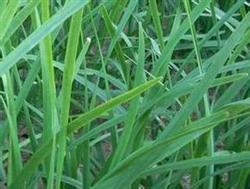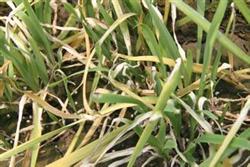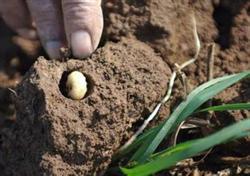Characteristics of fertilizer requirement and key points of fertilization techniques for leek

Firstly, leek is a perennial vegetable with strong adaptability to soil. It is suitable for loam and sandy loam, and leek needs a large amount of fertilizer. For annual leek, the plant is not fully developed and needs less fertilizer; 2-year-old 4-year-old leek has the strongest tillering ability and the highest yield, and the amount of fertilizer application should be increased accordingly; for leek more than 5 years old, soil fertility and plant growth have decreased due to repeated harvests for many years. It is necessary to increase the application of organic fertilizer to improve soil fertility and prevent premature senescence. Except for a large number of elements, the unique volatile odor components of Chinese chives contain sulfur elements, which are sulfur-loving crops. 2. Fertilization techniques (1) planting year 1. Applying sufficient base fertilizer: before planting, deep ploughing soil preparation and applying sufficient base fertilizer are the basic guarantee for continuous high yield of leek year after year. Generally, soil preparation is combined with deep ploughing before planting, and rotten organic fertilizer is applied to 5000 kg per mu. General-purpose sulfur-based compound fertilizer is about 50 kg. 2. Topdressing: when leek plant height 5cm and 10cm, combined with watering and topdressing twice, applying high nitrogen compound fertilizer about 10 kg each time. After entering the vigorous growth period, fertilizer and water management should be strengthened, generally applying about 20 kg of sulfur-based compound fertilizer per mu. (2) in the second year of planting, 1. Spring: when the temperature rises in spring and the leek begins to turn green, the withered branches and leaves on the ground should be removed in time. When the soil is frozen above 10cm, the soil should be loosened to preserve soil moisture and increase temperature, promote growth, and apply 15kg compound fertilizer per mu combined with watering. After entering the harvest period, after each harvest, hoe the surrounding soil, wait 2-3 days after the leek wound healing, new leaves are about to come out for watering, topdressing, generally about 20 kg per mu of compound fertilizer. 2. Summer: spring leek enters the root maintenance stage after harvest, and should be fertilized twice in 4-5 months. The first application of high-nitrogen compound fertilizer is 15kg / mu, and the second mu is about 15kg / mu. 3. Autumn: autumn is the main period for leek to accumulate nutrients, so we should strengthen fertilizer and water, reduce the number of harvests, or stop harvesting. Generally speaking, after the Beginning of Autumn, about 15 kg of compound fertilizer is applied per mu.
- Prev

Control methods of leek blight
Mix seeds with 0.3% seed volume of 25% pyrethromycete, use 64% poison alum 600 times solution, 69% Anke manganese zinc 600-800 times solution, 50% prohydantoin 500 times solution, 77% kill 600-700 times solution, use alternately, once every 5 to 7 days, prevent and cure 2 to 3 times.
- Next

Control methods of leek grub
The root was irrigated with 1000 times of phoxim, 1000 times of trichlorfon, 4000 times of 50% cyanohydrin EC, 3000 times of chlorpromazine and 2.5 times of trichlorfon. Before sowing or planting, you can also use the above agent mixed with poison bait or coated with seed coating agent.
Related
- Where is it suitable to grow horseradish in China? it is expected to see the middle altitude horseradish in Alishan.
- How to prevent tomato virus disease reasonably? (Control methods included)
- Many people like to plant towel gourd on the balcony. What are the main points of this method and management?
- What crops can chili peppers be mixed with?
- Fertilization techniques and matters needing attention in Tomato
- What are the grafting techniques for peach seedlings in spring?
- Harm and control methods of root swelling disease of Chinese cabbage
- What are the pests of sweet potatoes? How to prevent and cure it?
- Symptoms, causes and Control methods of navel Rot in Tomato
- The cause of "Cucumber rotten bibcock" in Farmers' planting Cucumber and its Control Plan

